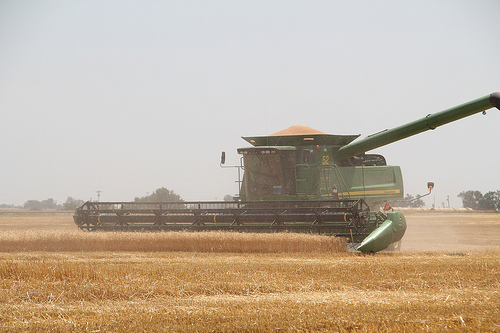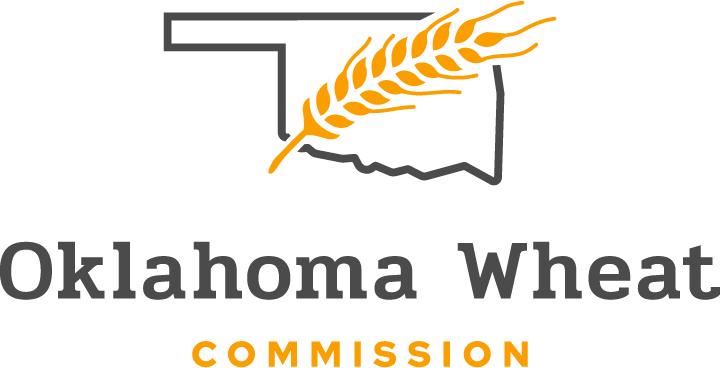
Agricultural News
Increase in World Wheat Supplies, Trumps Drop in US Winter Wheat Production Estimate
Fri, 10 Jul 2015 17:04:28 CDT
 The nation's winter wheat production estimate was revised lower Friday as a result of lower production projected in Oklahoma and Texas. The U.S. Department of Agriculture's National Agricultural Statistics Service released its latest crop production estimate as of July first. U.S. winter wheat production was forecast at 1.46 billion bushels, down three percent or 45 million bushels less than the June 1 forecast but up six percent from 2014. The average national winter wheat yield was forecast at 43.7 bushels per acre, down 0.8 bushel from last month but up 1.1 bushels from last year. The area expected to be harvested for grain totaled 33.3 million acres, unchanged from the Acreage report released on June 30, 2015 but up three percent from last year. Radio Oklahoma Network's Leslie Smith caught up with Tom Leffler of Leffler Commodities Friday for reaction to the USDA reports. Click or tap on the LISTENBAR below to listen to the full interview.
The nation's winter wheat production estimate was revised lower Friday as a result of lower production projected in Oklahoma and Texas. The U.S. Department of Agriculture's National Agricultural Statistics Service released its latest crop production estimate as of July first. U.S. winter wheat production was forecast at 1.46 billion bushels, down three percent or 45 million bushels less than the June 1 forecast but up six percent from 2014. The average national winter wheat yield was forecast at 43.7 bushels per acre, down 0.8 bushel from last month but up 1.1 bushels from last year. The area expected to be harvested for grain totaled 33.3 million acres, unchanged from the Acreage report released on June 30, 2015 but up three percent from last year. Radio Oklahoma Network's Leslie Smith caught up with Tom Leffler of Leffler Commodities Friday for reaction to the USDA reports. Click or tap on the LISTENBAR below to listen to the full interview.
Hard red winter wheat production was estimated at 866 million bushels, down two percent or 21 million bushels from last month. Soft red winter wheat was projected at 393 million bushels, down five percent from the June forecast. Wheat ending stocks came in at 842 million bushels. Leffler said this was 28 million more than last month, but less than trade expectations by 18 million.
In looking at the Southern Plains, USDA lowered wheat production estimates for Oklahoma and Texas, while boosting the Kansas wheat estimate. Leffler said USDA lowered Oklahoma's wheat production estimate by 18.6 million bushels to 96.2 million bushels. Oklahoma's average yield estimate was lowered by two bushels to 26 bushels per acre. USDA lowered the production estimate for Texas by 8.4 million bushels to 111.6 million bushels. The Texas yield estimate was lowered to 31 bushels per acre. USDA increased the Kansas wheat production estimate by almost 20 million bushels to 334.4 million bushels. The projected yield average for Kansas was increased by one bushel to 38 bushels per acre.
"So, Kansas did increase considerable, but not quite as much as what we saw Oklahoma and Texas decrease in production and that Kansas crop might get a little bit larger in the next report," Leffler said.
In the World Agricultural Supply and Demand Estimate (WASDE) report released Friday, world wheat old crop ending stocks were increased by about 12 million metric ton and new crop ending stocks increased by 17.4 million metric ton. Leffler said that was mostly because of the revision to China's stocks. World corn stocks were lowered by 5.24 million metric ton. Leffler said that came mostly from the drop in U.S. corn production by 100 million bushels. World soybean stocks decreased by 1.4 million metric ton. Leffler said this was the result of adjustments made to several countries.
"Not a whole lot that really stood out in the world numbers, other than the huge increase in the world wheat stocks," Leffler said.
On Friday, wheat prices traded lower while corn and soybeans traded positive. In seeing how the market reacted, Leffler said the futures markets will continue to be dominated by the fund buying in the marketplace and the weather.
"I would still recommend producers take advantage of the prices and do some selling," Leffler said. "Yes, they might go higher, hopefully it does go higher, but if it doesn't, you'll sure be glad you've done some selling."
Click here to read the full USDA-NASS crop production report.
Click here to read the full WADSE report.
WebReadyTM Powered by WireReady® NSI
Top Agricultural News
More Headlines...




















